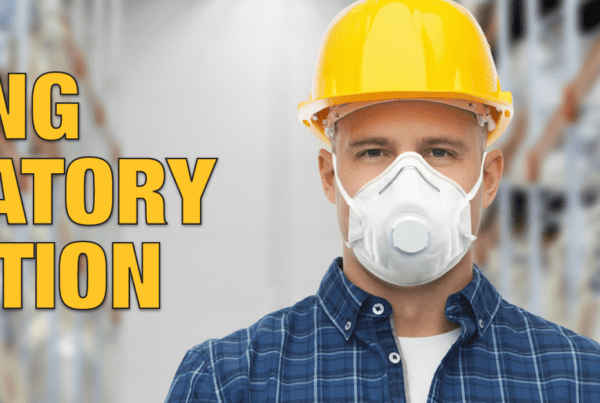Chlorine gas is a scary material. This yellowish gas can kill people at very low concentrations in air. Travelling wherever the wind takes it, leaking chlorine gas is an emergency situation. A mere 10 parts per million in air is classified as Immediately Dangerous to Life and Health (IDLH). The whole city of Mississauga, Ontario, was evacuated for a week in 1979 due to the threatened release of chlorine from one damaged railway tankcar.
And yet, people clean their swimming pools on a regular basis using products called “pool chlorine”. How is this possible?
It turns out that the chlorine we use in swimming pools isn’t actually chlorine gas. Instead, pool chlorine is composed of chemicals that react with water to give off chlorine gas, slowly and safely. Typical chemicals used for pool disinfectants may be inorganic (such as calcium hypochlorite or lithium hypochlorite), or organic (such as trichloroisocyanuric acid and sodium dichloroisocyanurate).
When these chemicals are mixed with water, they break down to generate chlorine gas in small amounts. However, chlorine is a highly reactive material. It reacts with water molecules themselves to form a substance known as hypochlorous acid. This acidic compound will destroy the cell membranes of harmful organisms such as bacteria and algae, killing them and disinfecting the pool.
Hypochlorous acid, however, is quite reactive itself. Therefore, stabilizers may be added to the chlorinating product, or may be added to the pool separately. Ironically, if you can smell a strong odour from a chlorinated pool, this may mean that the pool is not properly chlorinated – the strong smell is usually from reaction of the acid with organic materials to form chemicals called chloramines, which are highly irritating to the respiratory system. Proper monitoring of water quality, including chlorine level and pH is essential to keeping your pool healthy for swimming.
Still A Hazard . . .
Although pool chemicals aren’t as dangerous as pure chlorine gas, they still pose hazards for transportation, use and storage. Many pool chemicals are classified as oxidizers (that is, chemicals that will react with combustibles to cause ignition) as well as corrosives (chemicals that will attack metal or burn human skin tissue).
Due to their oxidizing properties, chlorinated pool chemicals should be kept away from any flammable material (such as gasoline) or combustible items such as cardboard boxes. Never allow pool chemicals to become contaminated with organic material, such as sawdust or oil. The Canadian Centre for Occupational Health and Safety (CCOHS) advises:
- Do not store pool chemicals near gasoline, fertilizers, herbicides, grease, paints, tile cleaners, turpentine, or flammable materials. This tip is especially important when pool chemicals are stored in sheds or small storage rooms.
- If a fire breaks out, do not use a “dry chemical” fire extinguisher. Only use large amounts of water. If you cannot extinguish the flame immediately, leave the area and call the fire department.
Since the chemicals may also be corrosive or at least highly irritating, always wear proper protective equipment when handling. Work gloves and eye protection, such as goggles, will protect against accidental splashes or contamination. If concentrated product lands on your skin or eyes, immediately flush with large quantities of water, and get medical attention when necessary. Of course, make sure to keep these chemicals away from children and pets, and never store leftovers in containers labelled as food or drink.
Since chlorinated chemicals are highly reactive, do not allow them to become contaminated by other chemicals. Especially important is keeping them away from acids – contamination with acid will result in rapid generation of chlorine. In 2012, a maintenance worker in St Catharines, Ontario, accidentally mixed about 90 litres of chlorine with 900 litres of muriatic acid (another common pool chemical). The resultant release of chlorine gas sent a dozen people to hospital with difficulty breathing and other respiratory symptoms.
Even mixing these chemicals with water can generate heat, which can cause the corrosive mixture to boil and splash back at you. Follow the rule from your high school chemistry teacher to always add your chemical to the water, not the water to the chemical, so that the heat can be dissipated by a larger amount of water.
CCOHS has a webpage dedicated to safe handling of pool chemicals at
http://www.ccohs.ca/oshanswers/chemicals/swimming.html. Users should also see if Safety Data Sheets (SDSs) are available from the supplier. SDSs are not mandatory for consumer products, but are usually provided upon request as a customer service. And, of course, always read the label before using or storing chemicals.
Pool chemicals that are oxidizers or corrosives will also be regulated for transportation. While both U.S. and Canadian regulations usually exempt transport by a retail purchaser of consumer products, these exemptions will not apply to third party carriers.
Do you have any further questions about the regulations involving pool maintenance chemicals? Contact ICC Compliance Center here at 888-442-9628 (U.S.) or 888-977-4834 (Canada), and ask for one of our regulatory specialists.







The unfortunate reality is that there are many hazards in and around swimming pools, which not only relates to the chlorine in the water but also to the chemicals and fertilizers being used in the green spaces around the pool. OSHA recently delayed the implementations of its crystalline silica safety standards, although this too is a huge health hazard. Keeping the water safe for everyone is more than ensuring it is clean. It is important to also ensure signage that warns both swimmers and employees regarding the various hazards. Important pool safety messages include warnings about wearing life jackets, watching children closely, lifeguards being on or off duty and no long breath holding. After all, we don’t want another incident like the one in Cheektowaga, where a teen drowned in a hotel pool in April 2017.
You have an interesting point, Will. Thank you for your comment!